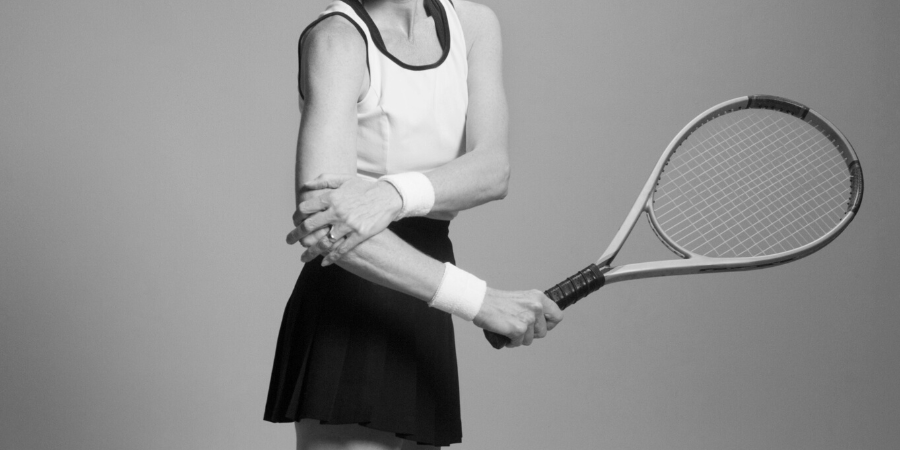Tennis elbow causes pain and tenderness on the outside of the elbow. It can affect anyone, with just 10% of cases caused by playing tennis! Here’s what you need to know about tennis elbow treatment, causes, and prevention.
What is tennis elbow?
Tennis elbow, also known as lateral epicondylitis (LE), is caused by overuse of the forearm muscles. This causes inflammation in the tendons that attach the forearm muscles to the outside of the elbow. It often leads to:
- Soreness or tenderness on the outside the elbow, which might radiate down the forearm
- Pain or stiffness when you straighten your arm
- Pain that increases when you shake hands, grip a pen or turn a door handle
What causes tennis elbow?
Tennis elbow is not confined to athletes, and can be caused by any activity that involves repetitive twisting of the wrist. It can affect:
- Carpenters, plumbers, and painters
- Gardeners, home decorators, or those who’ve embarked on a new DIY project
- Anyone who repeatedly bends their elbow to play an instrument (generally a violin)
- Office workers who repetitively use their keyboard and mouse.
It can even develop for no apparent reason. Generally, pain will build up over several weeks rather than after a specific traumatic event.
How do you treat tennis elbow?
The good news is that tennis elbow is self-limiting in 90% of cases – which means it will get better without treatment. But it can take months for symptoms to fully resolve. If you have symptoms, RACGP suggests a wait-and-see approach, which means:
- You should remain active and not restrict your arm or elbow movements – unless that movement causes pain greater than a 3 out of 10 (where 10 is the worst pain imaginable)
- Don’t immobilise the elbow or use a sling
- Don’t lift an object with hands facing down
- See a physiotherapist if your pain hasn’t improved after 6-12 weeks.
You can also use an ice pack and take painkillers to relieve pain and swelling.



How do you prevent tennis elbow recurring?
While 90% of people make a full recovery within a year, this is a long time to have symptoms and pain. If you want to stop tennis elbow from coming back, you should:
- Increase the strength of your forearm muscles, using an exercise program from a physio.
- Learn to use your shoulder and upper arm muscles to help spread the load.
- Warm up properly and gently stretch your arm muscles before playing any sport that involves repetitive arm movements, such as tennis, squash or badminton.
- If you play these sports regularly, get coaching advice to improve your form and use a two-handed backhand.
- If you developed tennis elbow at work:
- Avoid working with a bent wrist
- Use lightweight tools or tools with bigger grips
- Wear gloves and hold tools with a looser grip.
If you’re experiencing pain or inflammation, be sure to pop on an RE3 elbow pack to relieve discomfort.
Sources
https://www1.racgp.org.au/ajgp/2020/november/lateral-epicondylitis
https://www.nhs.uk/conditions/tennis-elbow/
https://www.racgp.org.au/download/Documents/HANDI/Tennis-elbow-patient-worksheet.pdf
https://www.healthdirect.gov.au/tennis-elbow
